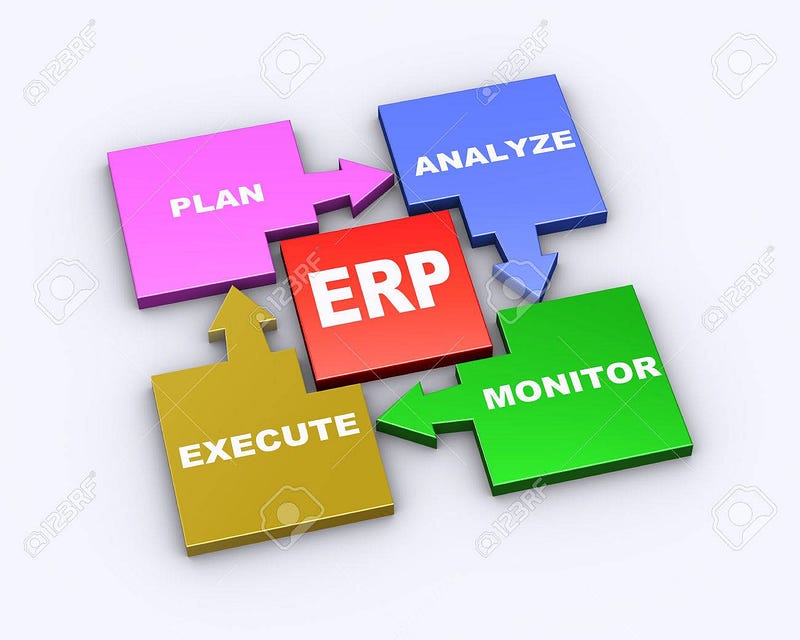ERP Life Cycle
Initial interest in getting and executing an ERP framework is considerable as far as both human endeavors and money related assets. After, fruitful execution, the framework goes to upkeep mode and associations start getting an incentive out of their speculation. After a delayed period, because of changes in business and innovative worldview, it turns out to be increasingly troublesome and costly to keep up and expand the framework. The procedure of reimplementation and start of another cycle begins.

ERP life cycles, which include whole 10 to 20 years of successful working life, are frequently mistaken for ERP Implementation Life Cycle. A portion of the periods of ERP life cycle is appeared in following outline.
ERP Roll out: The underlying turn out of an ERP framework itself comprises of different stages starting with Request for Proposal (RFP) and merchant selecton and finishing with go live and hand holding stage. Some significant issue concerning this phase,as given beneath, will have direct bearing on
Level of coordinating of vanila ERP item to current business need and degree of customization done, especially source code customization.
Responsibility of the seller for future advancement and their budgetary wellbeing
Bolster issues including License expenses and heightening thereof.
Streamlining: After the framework is live and turned out, there will be a time of strife. Because of absence of understanding, a great deal pf disarray will win among clients. There will teethe issues and some product bugs will constantly show up. With retraining, some tweaking of the framework and help from a responsive assistance work area, this stage ought to be over inside a half year to one year and the framework should begin stabilzing.
Support: This is the longest time of life cycle, when the association start acknowledging estimation of their speculation. Clients will get recognizable and start owning the framework. A few changes will be proceeding with, for example, new reports, various work processes, some localisation on charges and so on. Support will be secured by administration level understanding, involving installment of permit expense to the merchant. For a convoluted framework, there might be an outsider seller, helping upkeep at site. The permit expense, because of arrangement of acceleration, gets heightened at ordinary interims and after certain years, unfavorably impacts Total Cost of Ownership (TCO).
Broadening Values: This stage cover with the period of upkeep. New or changed business forms necessiate minor or moderate changes in the framework. There might be broad changes under situation, for example, I) actualizing another bookkeeping framework for example Global Finance Reporting standard (IFRS) ii) another administrative necessity like Sarbanes=Oxley iii) Margers and acquisations/restructuring.iv) Extending the framework with add on poducts suchy as Customer Relationship Management and Business Intelligence (BI). At some point the cost changes might be restrictive, especially for frameworks where a great deal of customization has been finished during usage stage.
Parallel to business changes, innovative changes additionally happen. New discharge and forms show up for underlaying technologiocal stages like Operating System and Data Base. ERP sellers discharge patches and forms of their producdts at normal interims which should have been joined in the current framework. This typically includes minor or modeate endeavors. Be that as it may, issue emerges where numerous softwae items were redone during usage. Retrofitting these articles for making them compatiable with later forms, may end up being a significant movement exercise including extreme expense and exertion.
Rotting Performance: For an undertaking, business need and innovative prerequisite, keep on developing. Cost, Complexity and trouble to adjust and refresh the current framework mount. Fixing existing framework is not any more suitable and gives reducing return. Choices are examined and choice of reimplementation is taken.
Reimplementation: Similar to Roll Out stage as referenced previously. Be that as it may, the associations are better composed at this point. Beginning procedure will be done all the more expertly. All things considered, they will embrace to a greater degree a vanilla form with least need of customization, so the following cycle gives a superior Return on Investment (ROI).

Comments
Post a Comment